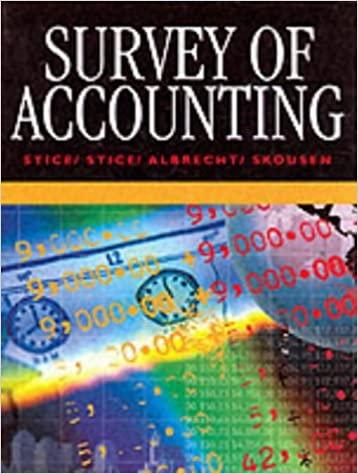Answered step by step
Verified Expert Solution
Question
1 Approved Answer
Note that I have attached the Fraud Buster Excel Spread sheet and the 1978 Taxable incomes. The problem requires you to use the Fraud Buster
Note that I have attached the Fraud Buster Excel Spread sheet and the 1978 Taxable incomes. The problem requires you to use the Fraud Buster spreadsheet (which incorporates the Benford's Law calculations) to help you ascertain if there is probable fraud in the taxes filed with the . The instructions in the problem require you to focus on the incomes of the first 6,000 people or entities. As instructed in the problem, you should delete the only the data or values that already exist in the first tab or worksheet labelled "Enter Data" of your Fraud Buster excel file. Then run Fraud Buster by clicking where it states "Fraud Busterin that first tab or worksheet. The tables and graphs in the next three tabs or worksheets will be updated, automatically. You must submit answers to Part 2 of the problemand you must attach the printouts of your results of your first digit second digit, and third digit tests. I do not need the data (first tab or worksheet). 
9-90. The AICPA provides a free Excel spreadsheet pro- gram that can be used to test data for consistency with Benford's Law. A link to this spreadsheet is available at www.pearsonhighered.com/rufus. Download the spreadsheet and study its structure as well as the manner in which it presents the results of the first-digit and second-digit tests. 1. Once you understand the spreadsheet, perform the following: a. Obtain the Excel data file for 1978 taxable income in the Chapter 8 materials via a link at www.pearsonhighered.com/rufus, which will take you to a web site hosted by Dr. Mark Nigrini. b. Copy and paste the first 6,000 observations into the data entry tab (Column A) of the Fraud Buster spreadsheet. Remember to clear all existing data prior to performing this step. c. Run Fraud Buster. 2. How do the results of the first-digit and second- digit tests compare to Benford's predicted distri- bution? Are there any digits you might investigate further? 9-90. The AICPA provides a free Excel spreadsheet pro- gram that can be used to test data for consistency with Benford's Law. A link to this spreadsheet is available at www.pearsonhighered.com/rufus. Download the spreadsheet and study its structure as well as the manner in which it presents the results of the first-digit and second-digit tests. 1. Once you understand the spreadsheet, perform the following: a. Obtain the Excel data file for 1978 taxable income in the Chapter 8 materials via a link at www.pearsonhighered.com/rufus, which will take you to a web site hosted by Dr. Mark Nigrini. b. Copy and paste the first 6,000 observations into the data entry tab (Column A) of the Fraud Buster spreadsheet. Remember to clear all existing data prior to performing this step. c. Run Fraud Buster. 2. How do the results of the first-digit and second- digit tests compare to Benford's predicted distri- bution? Are there any digits you might investigate further 
Step by Step Solution
There are 3 Steps involved in it
Step: 1

Get Instant Access to Expert-Tailored Solutions
See step-by-step solutions with expert insights and AI powered tools for academic success
Step: 2

Step: 3

Ace Your Homework with AI
Get the answers you need in no time with our AI-driven, step-by-step assistance
Get Started


